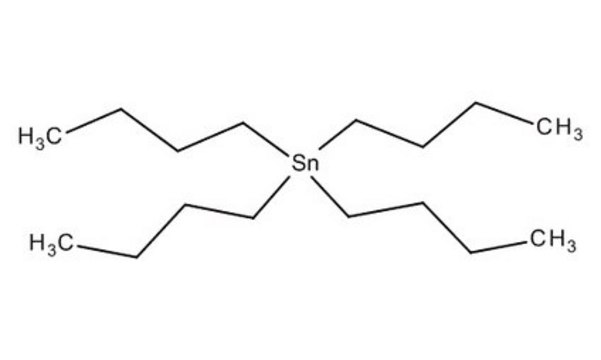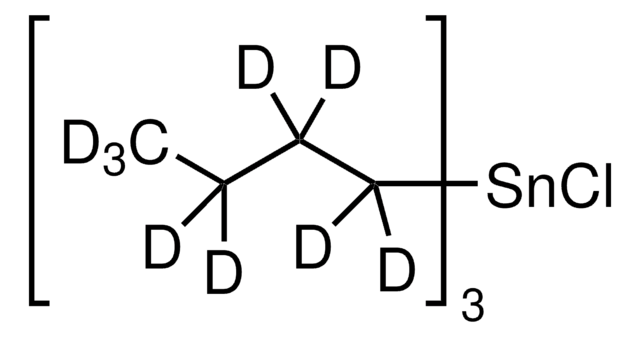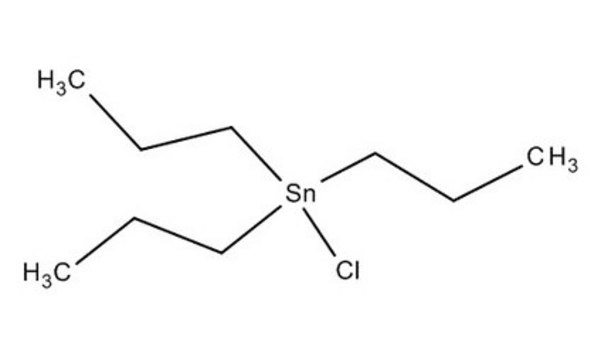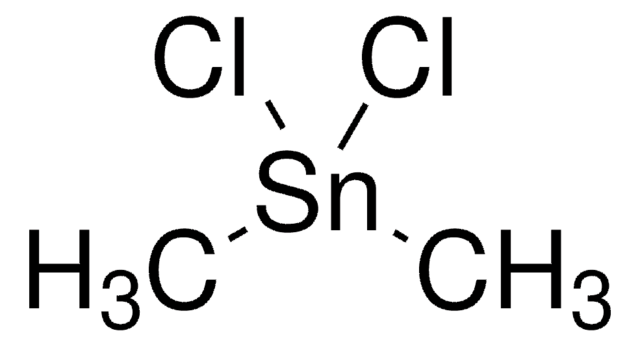442869
Tributyltin chloride
analytical standard
Synonym(s):
TBTC, Tributylchlorotin
About This Item
Recommended Products
grade
analytical standard
vapor pressure
<0.01 mmHg ( 20 °C)
CofA
current certificate can be downloaded
packaging
ampule of 500 mg
technique(s)
HPLC: suitable
gas chromatography (GC): suitable
refractive index
n20/D 1.492 (lit.)
bp
171-173 °C/25 mmHg (lit.)
density
1.2 g/mL at 25 °C (lit.)
application(s)
environmental
format
neat
storage temp.
2-30°C
SMILES string
CCCC[Sn](Cl)(CCCC)CCCC
InChI
1S/3C4H9.ClH.Sn/c3*1-3-4-2;;/h3*1,3-4H2,2H3;1H;/q;;;;+1/p-1
InChI key
GCTFWCDSFPMHHS-UHFFFAOYSA-M
Looking for similar products? Visit Product Comparison Guide
General description
Application
- Seawater samples by gas chromatography-triple quadrupole mass spectrometry (GC-MS/MS) with electron ionization (EI) and multiple reaction monitoring (MRM) modes of operation.
- Sediment samples by static headspace (SHS) GC combined with MS operating in selected ion monitoring (SIM) mode.
- Environmental water sample matrices by stir bar sorptive extraction (SBSE) with sodium tetrahydridoborate (NaBH4)-based in-situ derivatization combined with large-volume injection (LVI) GC-MS operating under the SIM mode of detection.
- Natural waters by LVI using programmed temperature vaporization (PTV) injector-GC combined with inductively coupled plasma (ICP) MS.
Signal Word
Danger
Hazard Statements
Precautionary Statements
Hazard Classifications
Acute Tox. 3 Oral - Acute Tox. 4 Dermal - Aquatic Acute 1 - Aquatic Chronic 1 - Eye Irrit. 2 - Repr. 1B - Skin Irrit. 2 - Skin Sens. 1B - STOT RE 1
Storage Class Code
6.1C - Combustible acute toxic Cat.3 / toxic compounds or compounds which causing chronic effects
WGK
WGK 3
Flash Point(F)
226.4 °F - closed cup
Flash Point(C)
108 °C - closed cup
Personal Protective Equipment
Regulatory Information
Choose from one of the most recent versions:
Already Own This Product?
Find documentation for the products that you have recently purchased in the Document Library.
Our team of scientists has experience in all areas of research including Life Science, Material Science, Chemical Synthesis, Chromatography, Analytical and many others.
Contact Technical Service










